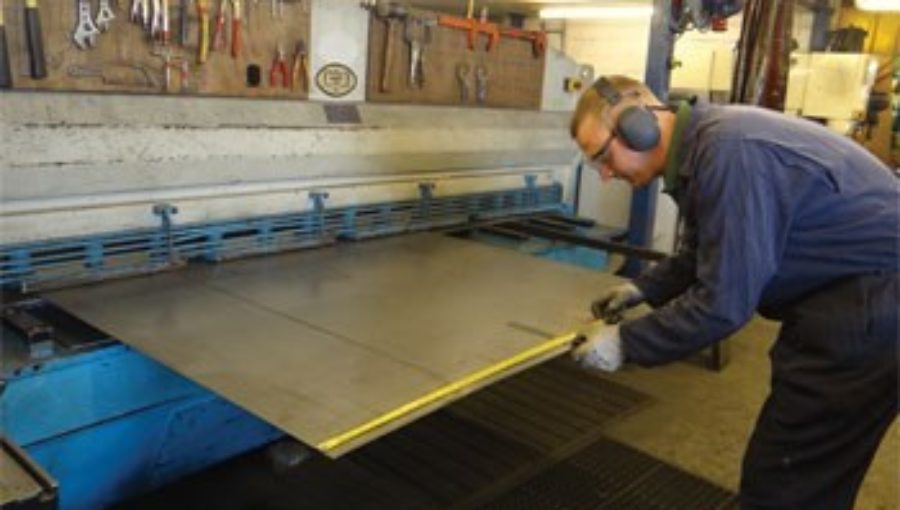In today’s fast-paced world, electrical kiosks play a vital role in delivering power to essential infrastructure and industries. One material that has revolutionized the manufacturing of these kiosks is Glass Reinforced Plastic (GRP). Lightweight, durable, and resistant to corrosion and weathering, GRP electrical kiosks offer a range of benefits that traditional options can’t match.
By using GRP in the construction of electrical kiosks, companies can ensure that their critical equipment is protected in the toughest environments. GRP’s non-conductive properties make it an ideal choice for electrical enclosures, safeguarding the inner components from electrical hazards. Additionally, GRP kiosks have the advantage of being easily customisable, enabling companies to tailor them to their specific needs.
From power distribution and control systems to telecommunications and water treatment facilities, the uses for GRP electrical kiosks are vast. They provide a safe and reliable housing for electrical equipment, ensuring the smooth functioning of infrastructure in various industries.
In this article, we will delve into the benefits and uses of GRP electrical kiosks, exploring how this innovative material is unlocking the power for critical infrastructure worldwide.
Understanding the Benefits of GRP Electrical Kiosks
Glass Reinforced Plastic (GRP) has emerged as a game-changing material in the world of electrical kiosks, offering a range of benefits that make it a preferred choice for critical infrastructure and industrial applications. One of the primary advantages of GRP electrical kiosks is their exceptional durability and resistance to environmental factors. Unlike traditional metal enclosures, GRP kiosks are impervious to corrosion, weathering, and the effects of harsh outdoor conditions, ensuring a longer lifespan and reduced maintenance requirements.
Another key benefit of GRP electrical kiosks is their lightweight construction. Compared to their metal counterparts, GRP kiosks are significantly lighter, making them easier to transport, install, and handle. This lightweight design translates to cost savings during installation and reduces the strain on supporting structures, making them a practical choice for a wide range of applications. Additionally, the non-conductive nature of GRP material provides an added layer of safety, protecting personnel from electrical hazards and minimizing the risk of short circuits or electrical shocks.
Customisability is another significant advantage of GRP electrical kiosks. These enclosures can be tailored to meet specific requirements, from size and shape to color and finish. This flexibility allows companies to create kiosks that seamlessly integrate with their existing infrastructure and aesthetic preferences, ensuring a cohesive and visually appealing installation. The ability to incorporate custom features, such as ventilation systems, cable entry points, and access panels, further enhility of GRPances the versat electrical kiosks, making them a versatile solution for diverse applications.
Exploring the Various Uses of GRP Electrical Kiosks
The versatility of GRP electrical kiosks is reflected in their wide-ranging applications across various industries. One of the primary use cases is in power distribution and control systems, where these kiosks provide a robust and reliable housing for critical electrical equipment. From substations and transformers to switchgear and control panels, GRP kiosks ensure the safe and efficient operation of power infrastructure, even in the most challenging outdoor environments.
In the telecommunications sector, GRP electrical kiosks play a crucial role in housing and protecting essential communication equipment, such as telecommunication cabinets, remote terminal units, and fiber optic distribution points. Their resistance to weathering and corrosion makes them an ideal choice for outdoor installations, ensuring uninterrupted service and reliable connectivity for communities and businesses.
Another significant application of GRP electrical kiosks is in water treatment and wastewater management facilities. These kiosks are often used to house control panels, pumping stations, and other essential equipment in water treatment plants, sewage treatment facilities, and pumping stations. The non-corrosive nature of GRP material ensures the longevity of these kiosks, even in the presence of harsh chemicals and moisture-rich environments.
Beyond these traditional applications, GRP electrical kiosks are also finding their way into a variety of other industries, such as renewable energy, transportation, and industrial manufacturing. In renewable energy projects, these kiosks are used to house inverters, switchgear, and other electrical components for solar, wind, and hydropower installations. In the transportation sector, GRP kiosks are employed to protect traffic control systems, railway signaling equipment, and other critical infrastructure. In industrial settings, these kiosks are utilized to safeguard electrical systems, control panels, and automation equipment, ensuring the smooth operation of manufacturing processes.
Key Features and Design Considerations for GRP Electrical Kiosks
When it comes to GRP electrical kiosks, there are several key features and design considerations that make them a standout choice for critical infrastructure and industrial applications. One of the most notable features is the exceptional durability and weathering resistance of the GRP material. GRP is impervious to corrosion, UV radiation, and the effects of harsh environmental conditions, ensuring that the kiosks can withstand the elements and maintain their structural integrity over time.
Another crucial feature of GRP electrical kiosks is their non-conductive properties, which provide an additional layer of safety for personnel working in proximity to the enclosures. The non-conductive nature of GRP material minimizes the risk of electrical hazards, making it a safer choice compared to traditional metal enclosures, which can pose a risk of electrical shocks or short circuits.
Customisability is another key feature that sets GRP electrical kiosks apart. These enclosures can be tailored to meet specific size, shape, and design requirements, allowing companies to seamlessly integrate them into their existing infrastructure. From incorporating custom ventilation systems and cable entry points to adding specialized access panels and mounting options, GRP kiosks can be configured to suit the unique needs of each application.
When it comes to design considerations, the thermal management of the electrical components housed within the kiosks is of paramount importance. GRP kiosks can be equipped with various cooling solutions, such as natural ventilation, forced air cooling, or even climate-controlled systems, to ensure that the internal components operate within their optimal temperature range, even in challenging environmental conditions.
Another crucial design consideration is the ingress protection (IP) rating of the GRP electrical kiosks. These ratings, which range from IP23 to IP66, indicate the level of protection against the ingress of dust, water, and other environmental factors. Selecting the appropriate IP rating is essential to ensure the kiosks can effectively safeguard the electrical equipment from the specific environmental conditions of the installation site.
Installation and Maintenance of GRP Electrical Kiosks
The installation and maintenance of GRP electrical kiosks are crucial aspects that contribute to their long-term performance and reliability. One of the key advantages of GRP kiosks is their relatively straightforward installation process, which is often more streamlined compared to traditional metal enclosures.
The lightweight nature of GRP material makes the kiosks easier to transport and handle, reducing the need for heavy equipment or specialised lifting mechanisms during the installation process. Additionally, the modular design of many GRP kiosks allows for quick and efficient on-site assembly, further simplifying the installation and reducing the overall project timelines.
When it comes to maintenance, GRP electrical kiosks offer significant advantages over their metal counterparts. The non-corrosive nature of the GRP material means that the kiosks require minimal maintenance, with no need for regular painting or anti-corrosion treatments. Additionally, the smooth, non-porous surface of GRP kiosks makes them easy to clean and maintain, reducing the time and resources required for upkeep.
Routine inspections and minor maintenance tasks, such as checking for any cracks or damage, cleaning the exterior, and ensuring the proper functioning of ventilation systems, are typically all that is required to keep GRP electrical kiosks in optimal condition. This low-maintenance approach translates to cost savings over the lifetime of the installation, as companies can avoid the expenses associated with more intensive maintenance or early replacement of the enclosures.
Furthermore, the modular design of GRP kiosks allows for easy component replacement, should the need arise. Individual parts, such as access panels, cable entry points, or even the entire enclosure, can be swapped out with minimal disruption, ensuring the continued operation of the electrical equipment and minimizing downtime for maintenance or repairs.
Case Studies: Real-life Examples of GRP Electrical Kiosk Implementations
To better understand the real-world applications and benefits of GRP electrical kiosks, let’s explore a few case studies that showcase their successful implementation in various industries.
Case Study 1: Power Distribution in Harsh Environments
In a remote and rugged region, a power utility company faced the challenge of maintaining reliable power distribution in an area prone to extreme weather conditions and environmental hazards. They opted for GRP electrical kiosks to house their critical substation equipment, taking advantage of the material’s exceptional durability and weathering resistance. The GRP kiosks proved to be the perfect solution, withstanding the harsh environmental conditions and ensuring uninterrupted power supply to the surrounding communities. The lightweight design of the kiosks also simplified the installation process, reducing the overall project costs and timeline.
Case Study 2: Telecommunications Infrastructure in Coastal Regions
A telecommunications provider in a coastal region was struggling with the corrosion of their outdoor equipment cabinets, which were housed in traditional metal enclosures. The harsh, salt-laden environment was taking a toll on the cabinets, leading to frequent failures and disruptions in service. The company decided to switch to GRP electrical kiosks, which are impervious to corrosion and weathering. The GRP kiosks not only provided a long-lasting solution but also improved the overall aesthetic of the telecommunications infrastructure, blending seamlessly with the surrounding landscape.
Case Study 3: Water Treatment Facility Automation
A water treatment plant faced the challenge of protecting its electrical control panels and automation equipment from the harsh, moisture-rich environment. The facility opted for GRP electrical kiosks to house these critical components, taking advantage of the material’s non-corrosive properties and ability to withstand exposure to chemicals and water. The GRP kiosks ensured the reliable operation of the water treatment facility’s electrical systems, minimising downtime and maintenance requirements, and contributing to the overall efficiency of the plant’s operations.
These case studies illustrate the versatility and effectiveness of GRP electrical kiosks in addressing the unique challenges faced by various industries. By leveraging the inherent benefits of GRP material, companies can ensure the protection and longevity of their critical electrical infrastructure, regardless of the environmental conditions or the specific application requirements.
Comparing GRP Electrical Kiosks with Other Types of Enclosures
When it comes to selecting the right electrical enclosure for a particular application, companies often face a choice between different material options, each with its own advantages and drawbacks. To help in this decision-making process, let’s compare GRP electrical kiosks with some of the other common types of enclosures.
Metal Enclosures:
Traditional metal enclosures, such as those made from steel or aluminum, have been a staple in the industry for decades. While metal enclosures offer good mechanical strength and durability, they are susceptible to corrosion, especially in harsh environments. Additionally, metal enclosures are generally heavier and more challenging to install, compared to GRP kiosks.
Concrete Enclosures:
Concrete enclosures are another option for housing electrical equipment, particularly in applications where a high degree of physical protection is required. However, concrete enclosures are typically more expensive, heavier, and less customizable than GRP kiosks. They also require more specialized installation and maintenance procedures.
Plastic Enclosures:
Plastic enclosures, such as those made from thermoplastic materials, offer a lightweight and cost-effective alternative to metal and concrete options. However, they often lack the same level of durability and weathering resistance as GRP kiosks, making them less suitable for harsh outdoor environments.
When comparing these options, GRP electrical kiosks stand out for their exceptional combination of durability, lightweight construction, and customizability. The non-conductive and corrosion-resistant properties of GRP material make these kiosks a superior choice for protecting critical electrical equipment in a wide range of applications, from power distribution to telecommunications and water treatment.
Moreover, the ease of installation and low-maintenance requirements of GRP kiosks contribute to their overall cost-effectiveness, making them a practical and long-lasting solution for companies looking to safeguard their electrical infrastructure.
Choosing the Right GRP Electrical Kiosk for Your Application
Selecting the appropriate GRP electrical kiosk for a specific application requires careful consideration of various factors, including the environmental conditions, the size and configuration of the electrical equipment, and the specific requirements of the installation site.
One of the first steps in choosing the right GRP electrical kiosk is to assess the environmental conditions that the enclosure will be exposed to. This includes evaluating factors such as temperature extremes, exposure to UV radiation, the presence of moisture or chemicals, and the potential for mechanical impact or vandalism. Based on these environmental factors, you can determine the appropriate IP (Ingress Protection) rating and the specific design features that the GRP kiosk will need to incorporate.
Another important consideration is the size and configuration of the electrical equipment that will be housed within the kiosk. The kiosk must be large enough to accommodate all the necessary components, while also leaving sufficient space for ventilation, cable management, and maintenance access. Customisation options, such as the ability to adjust the internal layout or incorporate specialised mounting systems, can be crucial in ensuring a perfect fit for the application.
The specific requirements of the installation site also play a key role in selecting the right GRP electrical kiosk. Factors like available space, accessibility, and the need for integration with existing infrastructure can all influence the choice of kiosk design and size. Additionally, the aesthetic considerations, such as color and finish, may be important if the kiosk needs to blend seamlessly with the surrounding environment.
To ensure that the selected GRP electrical kiosk meets all the necessary requirements, it is often beneficial to work closely with the manufacturer or a specialized vendor. They can provide expert guidance on the selection process, offer customization options, and ensure that the chosen kiosk is the perfect fit for the application.
By carefully considering these factors and collaborating with experienced professionals, you can be confident in choosing the right GRP electrical kiosk that will provide reliable, long-lasting, and safe protection for your critical electrical infrastructure.
Common Challenges and Troubleshooting Tips for GRP Electrical Kiosks
While GRP electrical kiosks are generally low-maintenance and highly reliable, there can be occasional challenges that may arise during their use. Understanding these common issues and having the right troubleshooting strategies can help ensure the continued smooth operation of your GRP kiosks.
One potential challenge is the ingress of water or moisture into the kiosk, which can be caused by damaged seals, improper installation, or extreme environmental conditions. To address this, it’s essential to regularly inspect the seals and gaskets, ensuring they are in good condition and properly installed. Additionally, ensuring the correct IP rating for the specific application can help prevent water ingress.
Another common issue is the buildup of dust or debris within the kiosk, which can impede the performance of the electrical equipment or cause overheating. Implementing a regular cleaning schedule, along with the use of air filters or other dust-prevention measures, can help mitigate this problem.
In some cases, the ventilation system within the GRP kiosk may not be functioning as intended, leading to overheating of the internal components. This can be addressed by inspecting the ventilation components, such as fans or vents, and ensuring they are operating correctly. In more severe cases, upgrading the ventilation system or incorporating additional cooling solutions may be necessary.
Lastly, while the GRP material is highly resistant to corrosion, it’s still possible for minor damage or cracks to occur, particularly in areas subjected to high mechanical stress or impacts. Regular visual inspections and prompt repairs can help prevent these issues from escalating and compromising the kiosk’s structural integrity.
To effectively troubleshoot and address these challenges, it’s crucial to have a well-documented maintenance plan, access to spare parts, and a reliable support network, such as the manufacturer or a specialised service provider. By proactively addressing any issues that arise and implementing preventive maintenance strategies, you can ensure the long-term reliability and performance of your GRP electrical kiosks.
Embracing the Power of GRP Electrical Kiosks in Modern Infrastructure
In the ever-evolving landscape of critical infrastructure and industrial applications, the role of GRP electrical kiosks has become increasingly pivotal. These innovative enclosures, crafted from Glass Reinforced Plastic, offer a compelling solution to the challenges faced by traditional metal or concrete alternatives, unlocking new possibilities for the reliable and safe housing of electrical equipment.
The exceptional durability, weathering resistance, and non-conductive properties of GRP material make these kiosks an ideal choice for a wide range of industries, from power distribution and telecommunications to water treatment and renewable energy. By providing a robust and long-lasting protection for critical electrical components, GRP electrical kiosks are helping to ensure the uninterrupted operation of essential infrastructure, even in the most demanding environmental conditions.
Beyond their practical benefits, the customizability of GRP kiosks allows companies to tailor these enclosures to their specific needs, seamlessly integrating them into their existing infrastructure and aesthetic preferences. This flexibility, combined with the ease of installation and low-maintenance requirements, makes GRP kiosks a cost-effective and efficient solution for safeguarding electrical equipment.
As the demand for reliable and resilient infrastructure continues to grow, the adoption of GRP electrical kiosks is poised to accelerate, unlocking new levels of power and connectivity for communities and industries worldwide. By embracing the power of this innovative material, companies can future-proof their electrical infrastructure, ensuring the smooth and secure delivery of essential services for generations to come.




